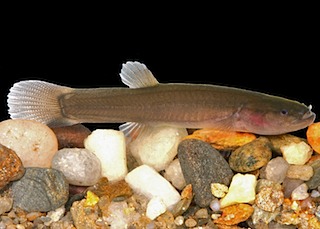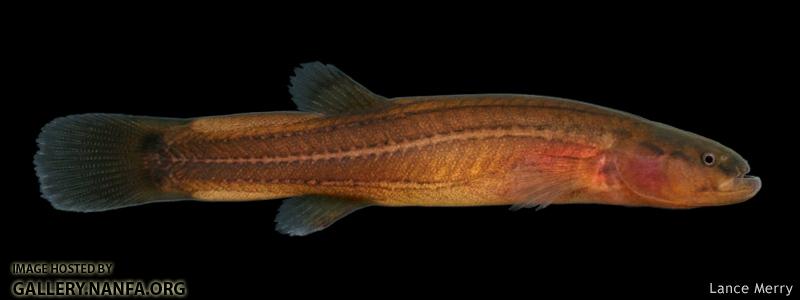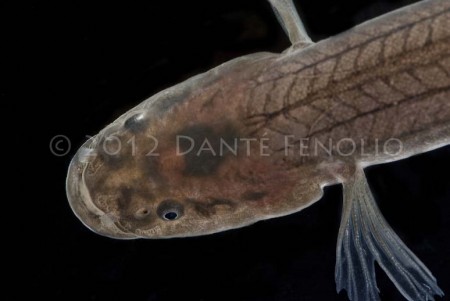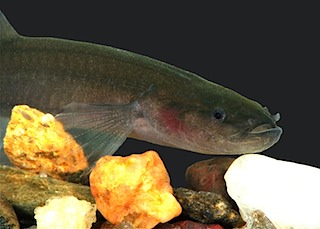
Forbesichthys agassizii
FAMILY
Amblyopsidae
TAXONOMY
This species originally was described under two names: Chologaster
agassizii and Forbesella agassizi Putnam, 1872, a well in
Lebanon, Wilson County, Tennessee, United States. The
genus Forbesichthys was eventually adopted since Forbesella was
already in use for marine animals known as tunicates.
OTHER COMMON NAMES
None known.
PHYSICAL CHARACTERISTICS
Grows to 3.54 in (9.0 cm). This species is dark brown to nearly
black on the dorsum, grading to lighter brown laterally; it is
cream yellow ventrally, often with a thin yellow stripe along each
side. These fish have minute scales embedded under the skin.
They lack pelvic fins and have triads of sensory papillae midlaterally
and scattered clusters called neuromasts on the head.
DISTRIBUTION
Found in central and western Kentucky (west to the Tennessee
River) to southern central Tennessee and west across southern
Illinois to southeastern Missouri. When the Mississippi River
changed its course, the Missouri population may have been isolated
from the others for about 2,000 years. It was intentionally
stocked from southern Illinois sites to establish a population
near Quincy College. This population was intended to serve as
a nearby source of fish for research.
HABITAT
Individuals of this species are active in springs at night, almost
always near the surface; they usually retreat underground during
the day.
BEHAVIOR
The few individuals that venture into the spring portions of
their habitats may have a strong tendency to move against the
current (rheotaxist) for periods of half a minute to one minute,
but they typically show strong thigmotaxis and hide under
rocks or debris. They prefer highly oxygenated over less oxygenated
water but respond to light by moving away (scotophilia).
They tolerate a wide range of temperatures.
FEEDING ECOLOGY AND DIET
They feed at night on amphipods, midge larvae, tiny worms,
and microcrustaceans.
REPRODUCTIVE BIOLOGY
Spawning takes place in February. The life span is about three
years.
CONSERVATION STATUS
Not listed by the IUCN.
SIGNIFICANCE TO HUMANS
It has no particular significance except for its ecological and
scientific value in researching the process of cave colonization.
Other popular Animals
Photo Gallery of - Spring cavefish





 Animalia Life
Animalia Life